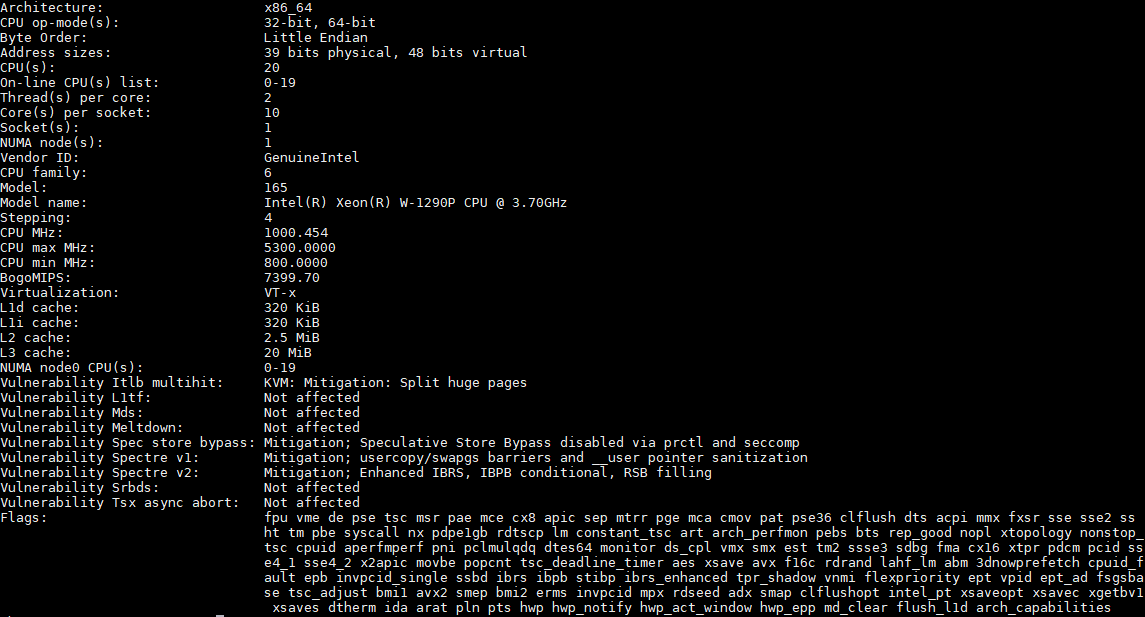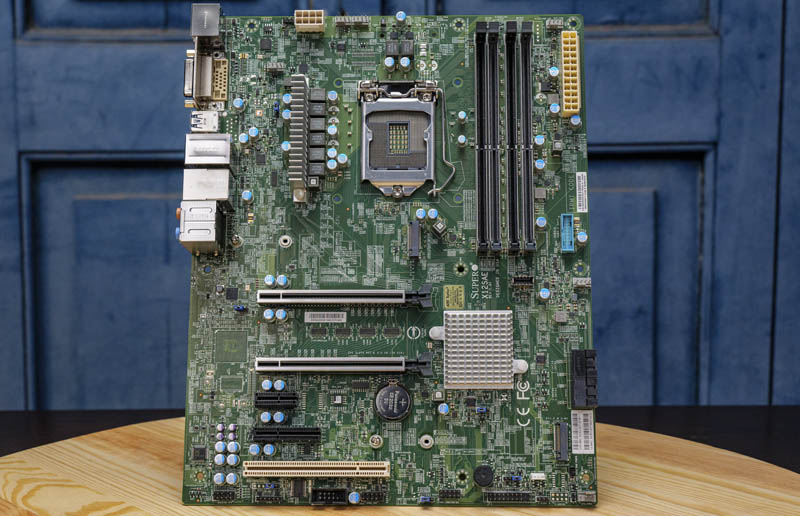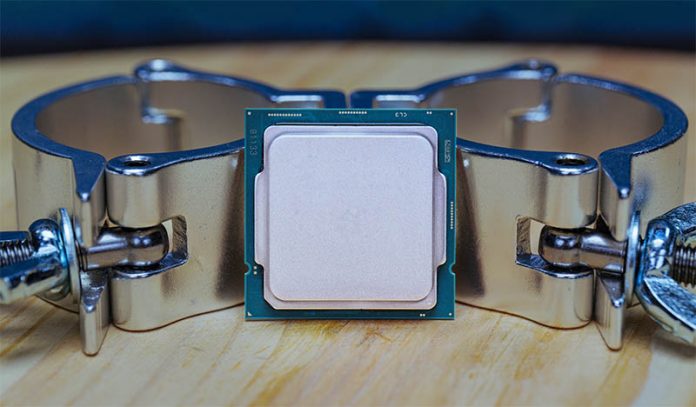In this benchmark and review piece, we are going to look at the Intel Xeon W-1290P which is the top-end SKU in this generation. With 10 cores and 20 threads, it seemingly offers a 25% core/ thread uplift over the previous generation. In our review, we are going to show that core counts alone are not the whole story, as there is more going on with this part. The Intel Xeon W line is designed as the W or “Workstation” equivalent to the Intel Core series. As such, this is a SKU meant for more professional workstations rather than enthusiast PCs. In this review, we are going to see what it offers.
Intel Xeon W-1290P Overview
Key stats for the Intel Xeon W-1290P: 10 cores / 20 threads with a 3.7GHz base clock and 5.3GHz turbo boost. There is 20MB of onboard cache. The CPU features an 125W TDP. These are $539 list price parts. Here is the Intel Ark page for your reference.
Here is the lscpu output for the chip:

After a foray into calling its lower-end Xeon’s the “Entry” series or Intel Xeon E-2000 series, Intel has circled back to the 1200 naming convention. We chronicled the original transition in Looking back at Intel Xeon E3-1200 V1-V6 to the New Xeon E-2100. We also had a ton of Intel Xeon E-2100 and Xeon E-2200 coverage on STH. We now have the Intel Xeon W-1200 series of Comet Lake Xeons for the workstation market. Still built on venerable Intel 14nm, this is one of the last CPUs that Intel will release on 14nm process before moving ahead.
The Xeon W-1290P is a successor to the Intel Xeon E-2288G in many ways. We still get integrated P630 graphics and ECC memory support. What we gain is two more cores and four more threads continuing a trend of big increases in this line. Both CPUs share the $539 price point Intel uses as the top-end of its segment.
Hitting 5.3GHz while adding more cores means that we get a big TDP bump as well. While the Xeon E-2288G was a 95W TDP part, the Xeon W-1290P is a 125W TDP part. This represents around a 32% increase in TDP. One should be mindful that there is a provision to down-configure the TDP back to 95W to maintain compatibility with cooling from previous generations.
In essence, what we are getting is 25% more cores and 32% higher TDP to let all of the cores run at a higher clock speed. This has a big impact because while the core counts are increasing, there are more static structures such as the iGPU and memory controllers that are present even on 8-core parts so the net impact is more power for all of the cores.
Test Configuration
Here is our basic configuration for this class of CPU:
- Motherboard: Supermicro X12SAE
- CPU: Intel Xeon W-1290P
- RAM: 2x 16GB DDR4-2933 ECC UDIMMs
- SSD: Intel DC S3710 400GB
- SATADOM: Supermicro 32GB SATADOM
The CPU itself supports up to 128GB of RAM, in a 4x 32GB configuration. We see these platforms using 16-64GB or less given cost sensitivities. One can also use ECC memory, but be aware these are unbuffered DIMMs not RDIMMs.

There are going to be folks who want to point to AMD alternatives. On the consumer/ enthusiast side, the AMD Ryzen platforms are incredibly competitive offering more cores. We have also seen a few Ryzen server platforms such as the ASRock Rack X570D4I-2T. The Xeon W-1200 series is focused on segments of the market where large OEMs are selling workstations to corporate clients.
Next, we are going to look at our Intel Xeon W-1290P benchmarks, we are then going to focus on power consumption then conclude with our final words on the processors.





…so, it’s kind a ‘deja vu’ e5-1650v2 with gimped pcie lines and memory channels :-)
Don’t see a point of multi-thread comparison of cpu’s with different core count.
What would be more interesting (for me at least):
1) Relative single-core performance at the same frequency (3GHz for example).
I know it’s pretty hard to do with server mainboards, but if possible, i’d like to know how much faster 1 core of w-1290p compared to e-2288g at the same conventional 3ghz.
2) Absolute single-core performance at cpu’s max turbo boost. (when all other cores idle).
3) Full-load single-core performance (all cores at 100% load). And what is the cpu frequency in this situation.
Of course 10-core w-1290p is overall faster in multi-thread than 8-core e-2288g, and of course 18-core w-2295 is even “faster”. In quotes because each of the w-2295 cores is definitely NOT faster because of the much lower frequency at full load.
Yes, overall cumulative cpu performance is interesting, but performance of each core is what really makes the cpu “fast” – that’s interesting too.
Surely due to its low cost, low core count, but high frequency, this CPU could be fairly useful for GPU workstations/servers (eg just to feed the GPUs). So I was a bit surprised you never mentioned its PCIE lanes in this review? (I guess there is probably a reason that I am overlooking).
@Chris. Per the Ark page linked, it has 16 lanes. Which is because this is a desktop CPU with it’s ECC not fused off.
Intel segments the market too much. This is a CoreMumbleMumble CPU. But which Cove (or is it Creek or Peak or Crag or SlagHeap) core uarch? With the Other Companie one can at least draw a straight line fro. The product name to what is inside.
John,
A little disappointed about:
1- The inconsistent CPUs listed in benchmark results
2- The mixing of server CPUs (AMD EPYC) along with desktop CPUs
3- The complete lack of Ryzen 2000 or 3000 CPUs in the benchmark (you include a Ryzen 1600AF)
4- No comparison larger value proposition of Intel vs. AMD.
Chris, the platform is limited to 1x PCIe 16 or 2x PCIe wires. So max two crippled GPUs or one with full-speed of PCIe 3.0 version.
NotSlow, for ST performance comparison I would recommend to compare geekbench on the same OS with the same GB version.
Laugh, not so, e5-1650v2 was adult chip supporting RDIMMs, this is just sporty CPU with just poor UDIMM ECC support.
I can handle the crippling for a large last level cache, a pair of slots supporting Optane in storage mode is fine to feed a model, and a OCP 3.0 or Intel 100g. I would be running AVX codes on these with a presumably fat margin captured by Intel for Optane DIMMS, (oh why can’t we have a on board accelerated Intel 100g NIC? The other x8 lanes do me fine for a FPGA (I really can see this SKU being used under a Bluefield hypervisor solely for AVX codes. Iris graphics would have been perfectly lovely. Seriously these kinds of topologies need to be AICs that I can install in my POWER 9 RHEL/OpenShift environment. With a dma link across to the Accelerator Formerly Known As Quadro installed in the adjacent CXL slot. I would love to dedicate something like this (but upscale) to running Nuke / Baselight / Unity (per card, all wanting x64, me wanting POWER and ARM SVE for everything we write). I would spend more with Intel for CPU alone in this way.
BinkyTo: I usually find I can get a pretty good idea of “missing” data if I really read the review over. I know rtfa is so cliché but obviously delineation of the skus gives free product away that if I’ve need to show anyone else I’ll buy not claim I’m clever… I actually thought this review more generous than usual by mixing up the geometry of the comparables.